Main benefits of cognitive technology
Cognitive technology uses its ability to analyze and process large amounts of volumetric data to help companies apply a computational system to various relevant challenges in their daily operations. That’s why companies from multiple sectors are adopting cognitive computing and benefit from it massively.
In manufacturing, finance and customer service, cognitive technology can be used to automate routine and repetitive tasks and reduce costs. It also excels at analyzing large amounts of data quickly and accurately, which leads to making more informed decisions based on insights and patterns. Its NLP capabilities allow machines to understand and process human language, facilitating better communication between humans and machines. Such benefits are valuable in customer service applications, chatbots and virtual assistants.
What’s also important is that cognitive technologies are learning from user behavior and preferences to increase personalized experiences, which can be widely seen in streaming services or e-commerce platforms. The gathered knowledge can improve the customer experience by providing personalized recommendations, resolving queries through virtual assistants and offering more efficient and responsive services. Cognitive technology can learn from every experience and adapt it to the next one, making each more effective.
Cognitive technologies can also analyze existing data and patterns to generate new ideas and solutions, particularly beneficial in research and development processes. For the financial industry, it is crucial to analyze complex datasets to identify potential risks and fraud. Cognitive technology contributes to better risk management and compliance with regulatory requirements.
The healthcare sector uses cognitive technology to improve diagnostics, personalized treatment plans, and drug discovery. It can analyze medical records, images and clinical research to provide more accurate and timely insights. Also, cognitive technologies can complement human capabilities, leveraging the strengths of both humans and machines. This is particularly evident in design, research and problem-solving fields.
From the beginning of TUATARA, we knew that we had to offer technical expertise and the ability to translate it into business language and tangible, measurable benefits. AI offers real opportunities for business, but it must be understood that it is not a panacea for all challenges. Correct implementation, right model selection, proper training, and thoughtful integration with existing processes are crucial. These all require a deep understanding of the business and multi-disciplinary capabilities. Krzysztof Goworek
CEO, TUATARA
Natural Language Processing
Natural Language Processing is a branch of AI that focuses on human-computer interactions using natural language. It aims to understand, interpret and develop human language meaningfully. Achieving that goal involves the application of computational algorithms and linguistics to bridge the gap between human communication and computer understanding. 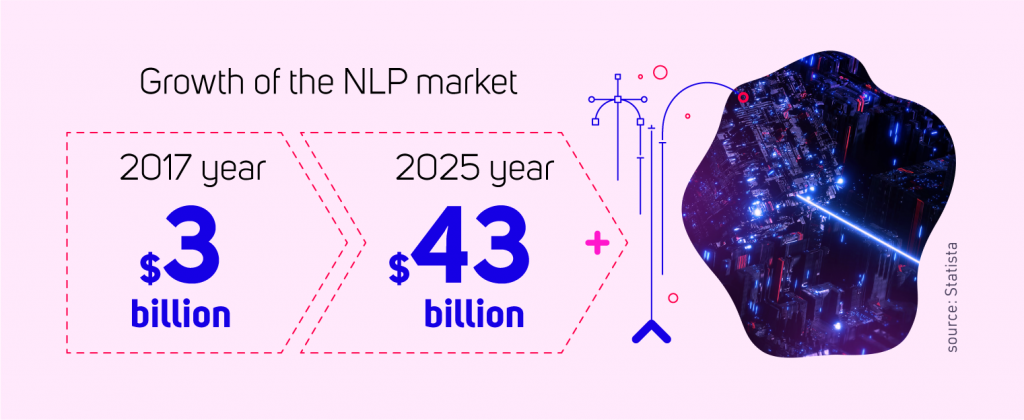
Key components and techniques within NLP include:
- Tokenization – breaking down text into individual words or tokens.
- Part-of-speech tagging – assigning grammatical categories to each word in a sentence.
- Named Entity Recognition (NER) – identifying and classifying entities such as names of people, organizations, or locations within a text.
- Parsing – analyzing the grammatical structure of sentences to understand their syntactic relationships.
- Sentiment analysis – determining the emotional tone or sentiment expressed in a text (positive, negative or neutral).
- Machine translation – translating text from one language to another.
- Answering questions – extracting relevant information to answer questions posed in natural language.
- Text summarization – generating concise summaries of longer pieces of text.
With NLP’s rapid advancement in technology, its benefits continue to expand across various industries and applications.
First, NLP enables more natural and intuitive interactions between humans and computers, which is important in virtual assistants, chatbots and voice-activated systems. Its algorithms can process and understand vast amounts of textual data, making searching and retrieving relevant information from large databases or the internet easier. NLP can also automate tasks such as data entry, document classification and information extraction, reducing the need for manual labor in handling large volumes of text-based information.
Chatbots and virtual assistants powered by NLP can handle customer inquiries, provide information, and even perform transactions, improving the efficiency of customer service operations. They can also provide personalized recommendations by analyzing user preferences and behavior.
In healthcare, NLP is used to extract information from electronic health records, assist in diagnosis and help healthcare professionals access relevant medical literature. It also aids in legal research, contract analysis and compliance monitoring by automatically extracting and analyzing relevant information from legal documents.
Furthermore, NLP contributes to developing assistive technologies, like speech-to-text and text-to-speech, that make digital content more accessible to individuals with disabilities.
In TUATARA, we’ve created an innovative conversational AI chatbot, Actionbot. It can predict customer actions within any digital channel using AI and NLP algorithms.
Learn more about our product on its website and in our case studies.
Also, you can read more about the benefits of implementing NLP within the company:
Conversational AI
Conversational AI uses AI and NLP technologies to enable computers to engage in human-like conversations with users. The goal is to create intelligent, interactive systems to understand user input, generate relevant responses and simulate natural communication. Conversational AI is often implemented in chatbots, virtual assistants and other applications to enhance user experiences and communication between humans and machines. 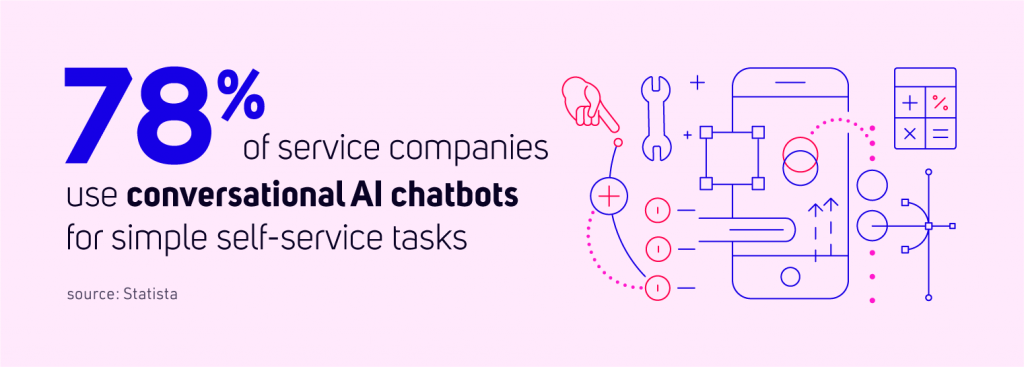
Conversational AI uses the following techniques to provide the best digital experience:
- Natural language processing – a foundational component of conversational AI, allowing systems to understand and interpret human language, including spoken and written communication.
- Speech recognition, which converts spoken words into text and enables the system to process and respond to voice commands.
- Text-to-speech (TTS) technology that converts text into spoken words, allowing conversational AI systems to communicate verbally with users.
- Intent recognition identifies the user’s purpose or goal behind a given input, helping the system provide relevant and accurate responses.
- Context management maintains context throughout a conversation, for example, by ensuring an understanding of the context of previous interactions to provide more coherent and personalized responses.
Conversational AI continues to evolve, and its applications are expanding across various industries, contributing to improved communication, efficiency and user satisfaction.
Conversational AI is widely used in customer service applications, where chatbots and virtual assistants can handle customer queries, provide information, assist with problem-solving, and offer 24/7 support. Conversational AI enhances user engagement on websites, mobile apps, and other platforms by delivering natural and interactive communication.
Within organizations, conversational AI can be deployed to assist employees with information retrieval, task automation, and other routine activities, enhancing overall productivity. Automating processes and reducing the need for human intervention in repetitive interactions can lead to significant cost savings. Also, it can handle multiple user inquiries simultaneously and respond in real-time, improving efficiency and reducing wait times for users.
Conversational AI can also be programmed to understand user preferences and tailor responses accordingly. This personalization contributes to a more individualized and user-centric experience. Moreover, it breaks down language barriers by enabling communication in multiple languages. This is particularly beneficial for businesses with a global customer base.
Conversational AI can be used in sales and marketing to engage with potential customers, answer queries, and guide users through product information, ultimately contributing to lead generation and conversion. In healthcare, conversational AI can assist in appointment scheduling, medication reminders, answering general health-related queries, and providing patient support and information. In educational applications, it can provide personalized tutoring, answer student queries, and facilitate interactive learning experiences.
Actionbot, our conversational AI chatbot, uses the IBM watsonx engine as the basis. With its help, our product can not only stimulate human-like conversation and put it in the appropriate context but also, with the help of its automation skills, make the user’s intent real.
You can learn more about it in our case studies.
To understand the power of conversational AI, read the articles below:
- Conversational AI chatbots in telecoms are improving customer experience
- How to develop a self-learning chatbot with IBM Watson – the best conversational engine
- IBM watsonx Assistant – an AI-powered engine for building conversational virtual agents
- Actionbot and ChatGPT – the smartest AI chatbot even more human-like
Deep Learning & Machine Learning
Machine learning and deep learning are two closely related fields within AI. Machine learning is a broader concept containing various techniques for enabling machines to learn from data. In contrast, deep learning is a specific approach within machine learning that focuses on neural networks with multiple layers, allowing for the automated learning of hierarchical representations. 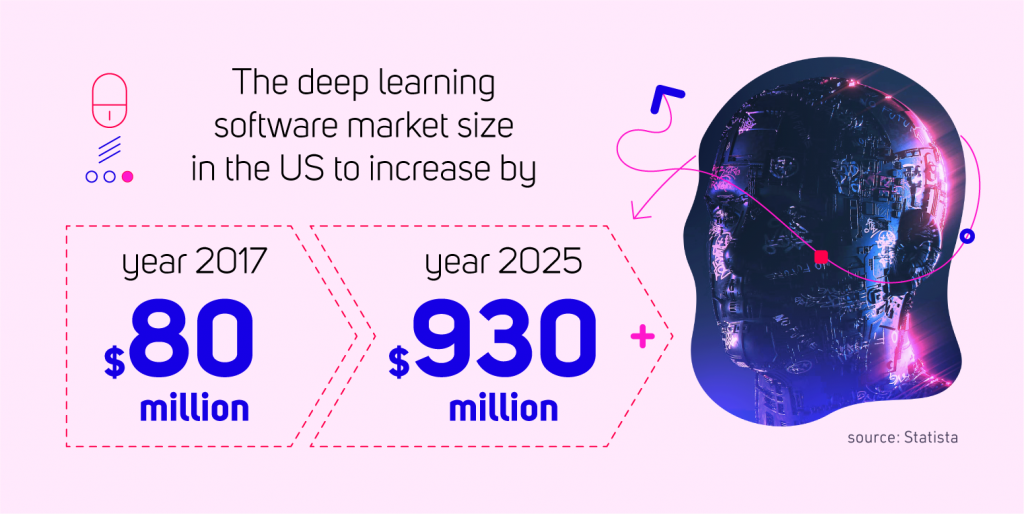
In machine learning, instead of being explicitly programmed to perform a task, machines are trained to use large amounts of data to recognize patterns, make predictions or optimize a specific objective.
There are three main types of machine learning:
- A supervised learning method involves training an algorithm on a labeled dataset, where the input data is matched up with the output data. Learning a mapping function from input to output is the goal.
- With unsupervised learning, an algorithm must discover patterns or structures without explicit guidance from a human. Clustering and dimensionality reduction are common tasks in unsupervised learning.
- In reinforcement learning, the algorithm learns from interactions and receiving feedback. The goal is to learn a strategy that maximizes the cumulative reward.
Deep learning algorithms, also known as neural networks, consist of interconnected layers of artificial neurons organized into an architecture that allows the model to learn hierarchical representations of data. Deep learning has succeeded in image and speech recognition, NLP, and playing games.
Deep learning uses the below components to enhance its automatic learning capabilities:
- Neural networks – models inspired by the human brain, composed of interconnected layers of artificial neurons.
- Deep neural networks (DNN) – neural networks with multiple hidden layers.
- Convolutional neural networks (CNN) – a type of neural network designed for tasks such as image recognition, utilizing convolutional layers.
- Recurrent neural networks (RNN) – neural networks designed for sequence data, where the output at each step depends on the previous ones.
- Transfer learning leverages pre-trained models on a specific task to improve performance on a related task.
4Semantics (a company that is a part of TUATARA Group) specializes in creating models for the classification, anonymization, and automation of document content. Also, by combining Machine Learning and Natural Learning Technology, the platform detects, analyzes, categorizes, catalogs, and protects sensitive data.
Learn more about our solutions on their websites:
Cognitive Process Automation
Cognitive Process Automation (CPA) is a term that combines elements of cognitive computing and process automation. It refers to using AI technologies, including machine learning, NLP, and other cognitive computing capabilities, to automate and optimize business processes. It represents the convergence of cognitive computing and process automation, leveraging AI technologies to automate and enhance various business processes. It aims to bring intelligence and adaptability to automation, making it more capable of handling complex tasks and evolving in response to changing circumstances. 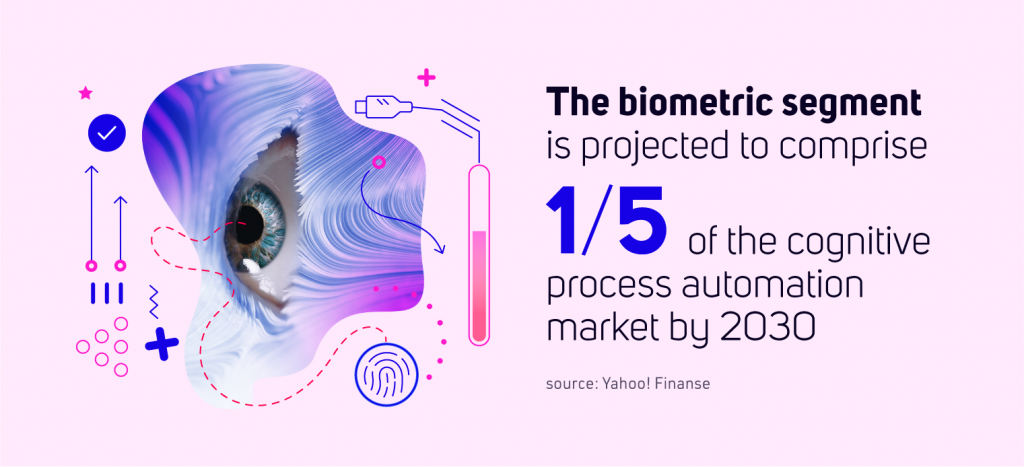
The key aspects of CPA are:
- Cognitive computing involves creating systems that can perform tasks that require human intelligence. This includes understanding natural language, recognizing patterns, learning from experience and problem-solving.
- Process automation involves using technology to perform tasks or processes with minimal human intervention. This can include automating repetitive tasks, business processes and workflows.
- Integration of AI Technologies to enhance automation capabilities. Machine learning algorithms enable systems to learn and adapt, natural language processing allows for interaction with human language, and other cognitive technologies contribute to more intelligent and adaptive automation.
- Intelligent decision-making based on the data they receive. They can analyze information, learn from past experiences, and adapt their behavior over time.
- Context-aware automation means they can understand the context in which a task is performed. This enables more nuanced and adaptive automation, as the system can consider various factors influencing a particular situation.
- Application in various industries, including finance, healthcare, customer service, and more. It can be used to streamline and optimize a wide range of business processes, from data entry and document processing to customer support and decision-making.
- Continuous learning and improvement. As CPAs encounter new data and situations, they can adapt and refine their processes to become more effective.
We created a solution that works best for process automation using cognitive automation capabilities. The Cognitive Hand is an application developed by 4Semantics that uses NLP mechanisms to understand documents and observe how users work with business applications.
If you want to know more about The Cognitive Hand and how it can help automate business processes, visit the product’s website.
Also, to learn more about how we benefit from cognitive process automation, read the articles below:
- What is cognitive automation and how does it differ from robotic process automation?
- Cognitive automation – the next step in process automation
- SensID Cognitive Automation
- Automation for e-commerce
Document understanding
Document understanding refers to applying AI and machine learning techniques to process and comprehend the content of documents. The goal is to extract meaningful information, insights, or actionable data from various documents, such as text files, images, PDFs, and more. Document understanding involves several key tasks, often in the context of document automation and information extraction. 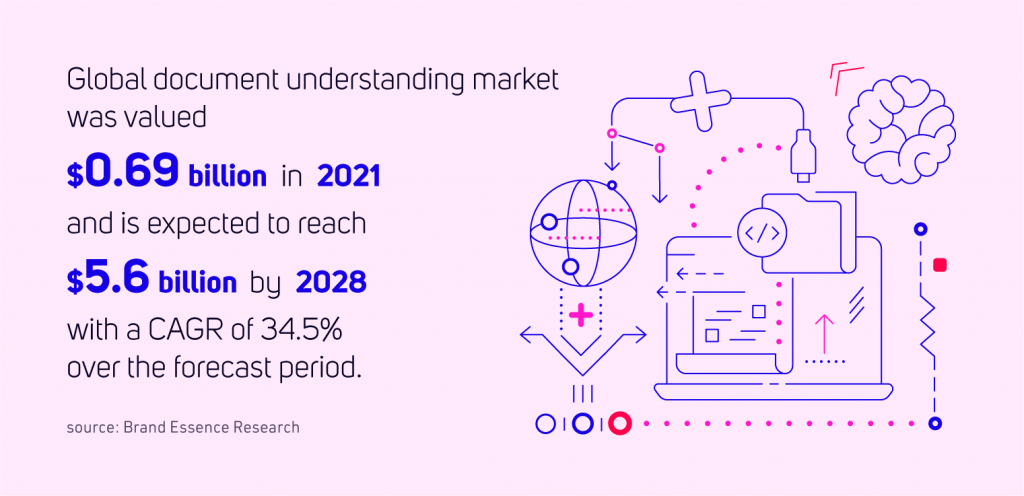
Here are some key aspects of document understanding:
- Extracting relevant information from unstructured text is fundamental to document understanding. This involves identifying and capturing key data points, entities, and relationships in the document.
- Extracting structured information from unstructured documents. This can include details such as dates, numbers, addresses, and other data that can be used for further analysis or automation.
- NLP techniques are applied to understand the semantics and context of the text within documents. This includes tasks such as sentiment analysis, language translation, and named entity recognition (identifying names, organizations, locations, etc.).
- Optical character recognition (OCR) is used to convert the images of text into machine-readable text. This is crucial for extracting information from scanned invoices, receipts, or handwritten notes.
- Categorizing documents into different classes or types can be useful for sorting and organizing large volumes of documents, such as emails, articles, or legal documents.
- Semantic understanding involves interpreting the meaning of the content. This can include understanding the intent of a document, summarizing its content, or identifying key topics.
- Analyzing documents to identify similarities and group-related documents is a part of document understanding. Clustering similar documents can aid in organizing and retrieving information effectively.
- Automation and workflows, where systems can automatically process invoices, contracts, or legal documents, extracting relevant information and triggering subsequent actions.
- Data validation and quality assurance to maintain the reliability of the information extracted from documents.
Document understanding has applications in various industries, including finance, healthcare, legal, and more. For example, in healthcare, it can be used to extract patient information from medical records. Also, in finance, it can assist in processing and analyzing financial documents.
4Semantics specializes in automating the process of case and issue reporting and its resolution. Using various digital channels such as e-mails, websites, or chat services is a new standard of client communication. That’s why e-mail automation can improve your client service speed and experience, making their life much easier.
To learn about the importance of document understanding as a part of cognitive technology, read a few of our case studies:
- Flexible document processing in financial institutions
- Automation for e-commerce
- Intelligent processing of transportation documents and queries
- SensID Catalog
Unstructured content analytics
Unstructured content analytics refers to applying data analysis and AI techniques to extract meaningful insights and information from unstructured data sources. Unstructured content typically refers to data that does not have a predefined data model or is not organized in a predefined manner. This includes data in the form of text documents, emails, social media posts, images, audio, and video. Unstructured content analytics aims to bring structure and understanding to this data type, enabling organizations to derive valuable insights. 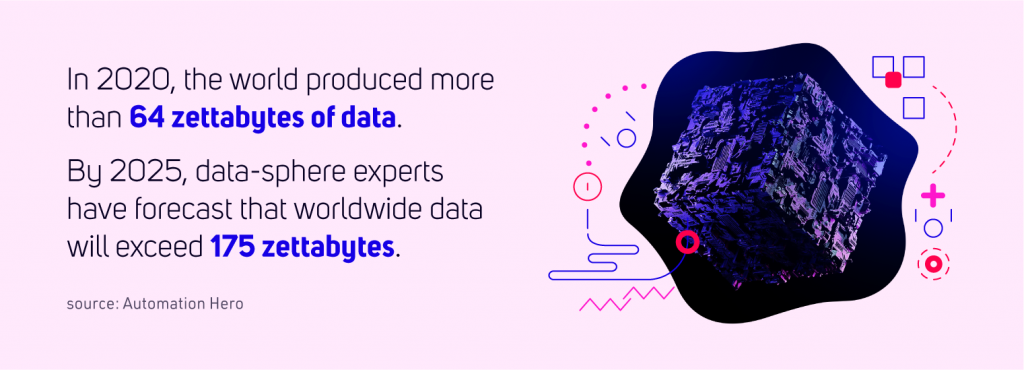
Unstructured content analytics finds applications in various industries. In healthcare, it can be used to analyze medical records and research papers. In finance, it can aid in analyzing news articles and financial reports.
Analyzing and extracting information from textual data is a core component of unstructured content analytics. This involves NLP techniques to understand the text’s meaning, sentiment, and entities. It also helps determine the sentiment expressed in text data, such as customer reviews, social media posts, or support tickets, to understand and enhance customer satisfaction.
With unstructured content analytics, companies can analyze and transcribe spoken words from audio files or recorded conversations, useful in call center analytics, voice assistants, and other spoken language applications. Also, it helps extract information from images and videos using computer vision techniques, which include object detection, facial recognition, and scene analysis.
Integrating unstructured content analytics with structured data sources can provide a comprehensive view. For example, discovering patterns, trends, and hidden insights within unstructured data can lead to new discoveries and a deeper understanding of the information contained in the data. Also, building powerful search and retrieval systems can quickly locate relevant information within large volumes of unstructured data. This is essential for efficient data management and decision-making.
Finally, it’s important to ensure that unstructured content analytics systems comply with data privacy regulations. This involves handling sensitive information appropriately and implementing measures to protect user privacy.
In TUATARA, we understand the importance of unstructured content analytics in cognitive technology.
You can learn more about our approach from the below examples:





